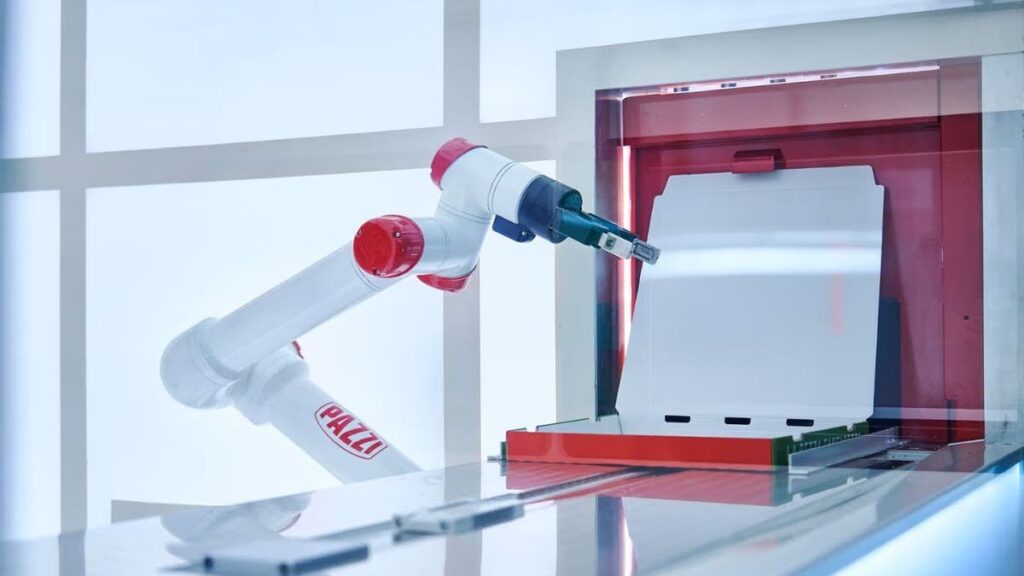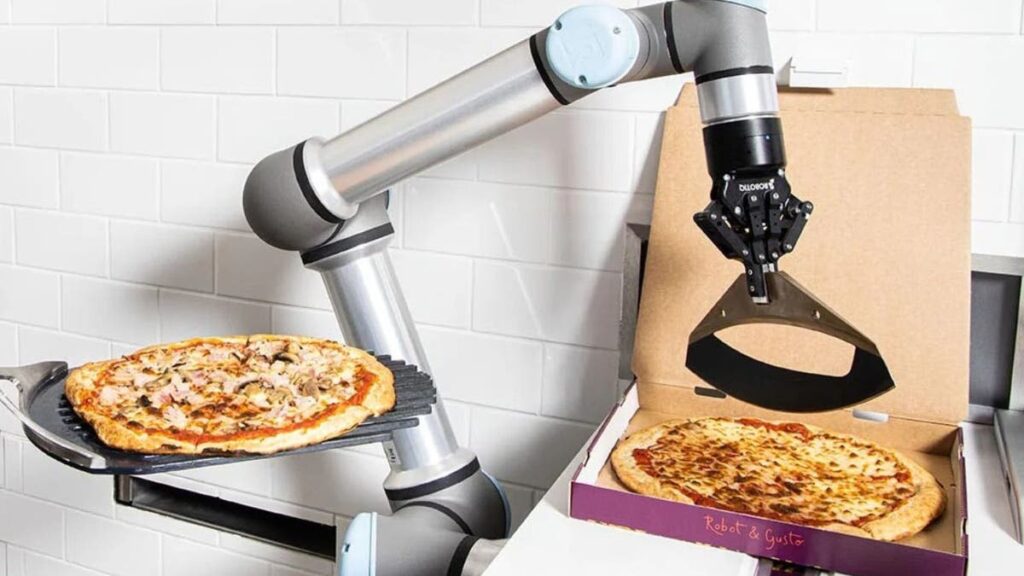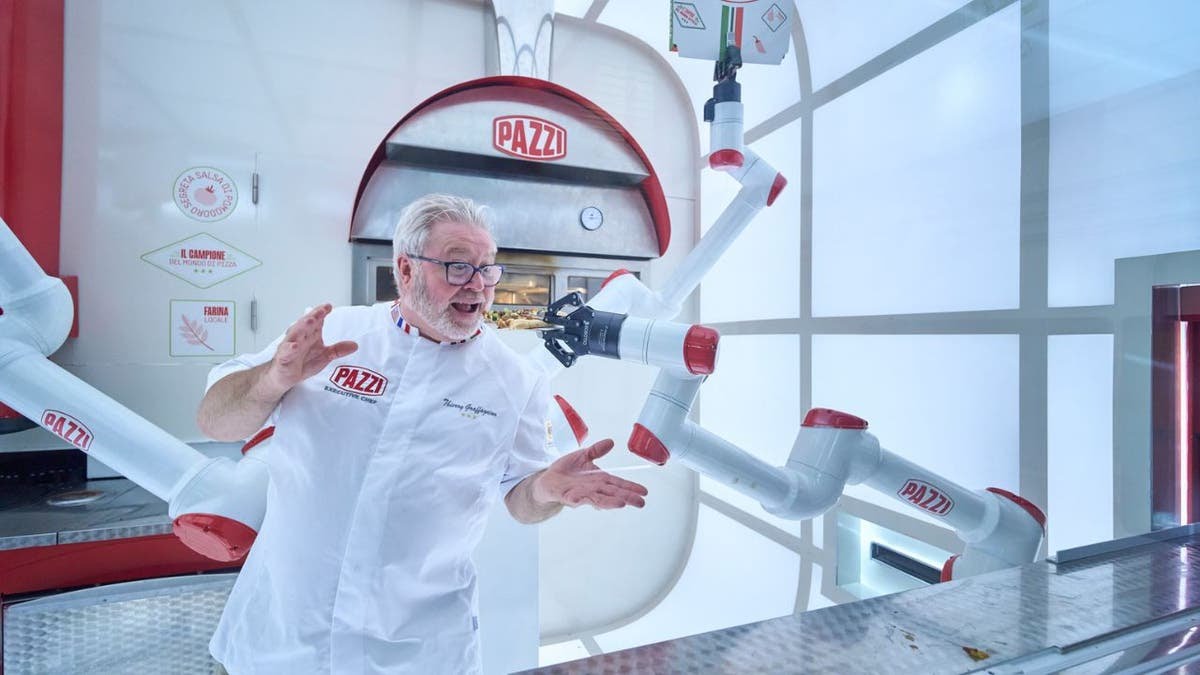In the heart of Paris, a bold experiment once promised to change how we think about pizza forever. Imagine walking into a sleek, modern restaurant, placing your order, and within minutes, watching a robot prepare your pizza entirely from scratch no human intervention needed. This was the futuristic vision of Pazzi Robotics, a French startup determined to blend advanced robotics with the time honored tradition of Italian pizza. But after nearly a decade of innovation, Pazzi shut its doors in 2022, leaving many to wonder. Were pizza-making robots simply ahead of their time? And more importantly, should they be given a second chance?
The Rise and Fall of Pazzi Robotics
Pazzi Robotics emerged as a symbol of what’s possible when technology meets culinary artistry. Founded by two French entrepreneurs, the company invested nine years into perfecting pizza-making robots capable of stretching dough, applying sauce, and adding toppings with machine precision. The goal was simple yet ambitious: deliver high quality, consistent pizza faster than traditional kitchens could.
At its peak, the Parisian outlet attracted curious food lovers, tech enthusiasts, and media attention. Many praised the novelty, but others criticized the lack of a “human touch.” Ultimately, a combination of high operational costs, public skepticism, and the challenge of scaling led to Pazzi’s closure.
But was this truly a failure? Or merely the natural growing pains of disruptive innovation?
Dr. Sophia Bellamy, a robotics researcher at the University of Cambridge, believes pizza-making robots were a glimpse into the future just not one the world was ready to embrace.
“We often see technologies emerge before society is culturally or economically prepared for them,” she explains. “Pazzi’s concept wasn’t flawed; the timing likely was.”
Indeed! history offers similar examples. Consider the case of self checkout machines, which faced resistance early on but are now commonplace worldwide. Robotics in food preparation may follow a similar trajectory.

Flippy the Burger Robot
Another example comes from the U.S. company Miso Robotics, creators of Flippy the burger flipping robot. Initially met with skepticism, Flippy has found success in several American fast food chains, demonstrating that automated cooking, when introduced strategically, can thrive.
Flippy’s success suggests that pizza-making robots may simply need refined execution, better marketing, and integration within broader kitchen environments, rather than complete standalone operations.
For some customers who visited Pazzi, the experience was more than a gimmick. Laura, a Paris resident who dined there in 2021, shared her perspective-
“I loved watching the robot prepare my pizza. It was fascinating, and the pizza itself? Honestly, better than some traditional spots. But my friends weren’t convinced it lacked the charm of a real pizzaiolo tossing dough.”
This feedback highlights a core challenge: food is not just about taste it’s also about emotion, connection, and tradition. Pizza-making robots may excel in consistency, but winning hearts requires more than mechanical perfection.
Are We Ready Now?
Several factors suggest the world might be more receptive to pizza-making robots today-
1. Labor Shortages: Many food service industries worldwide face staffing shortages, making automation an attractive solution.
2. Rising Costs: Automated kitchens can reduce labor expenses and waste, potentially making businesses more profitable.
3. Technological Advancements: Robotics and AI have advanced significantly since Pazzi’s inception, improving both efficiency and user experience.
4. Consumer Acceptance: With self-driving cars, cashier less stores, and robotic deliveries becoming more mainstream, public resistance to food automation is slowly diminishing.
Moreover! the COVID-19 pandemic accelerated demand for contactless food preparation, a scenario where pizza-making robots could shine.

A Second Chance, With Lessons Learned
The story of Pazzi Robotics is not a tale of failure, but rather a valuable lesson in innovation timing and cultural readiness. While the initial rollout of pizza-making robots may have stumbled, the potential remains undeniable. With strategic improvements, better marketing, and careful integration into existing food service models, these robotic chefs could revolutionize how we enjoy one of the world’s favorite comfort foods.
In the end, the question isn’t whether pizza-making robots deserve a second chance but whether we, as consumers, are ready to embrace the delicious possibilities of a robotic culinary future.


1 thought on “Can Pizza-Making Robots Change the Food Industry? Find Out If They Deserve a Second Chance”